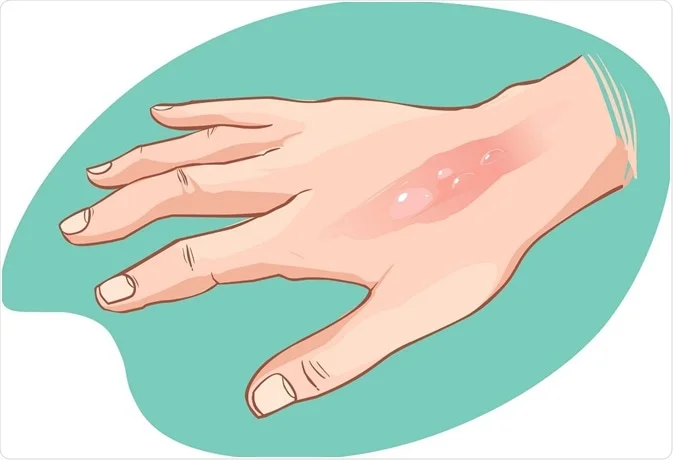Contents
ozeku.com – Quitting smoking is a challenging but incredibly rewarding journey. With millions of people around the world trying to break free from the grip of nicotine addiction, it’s crucial to provide practical tips and strategies that can help individuals on their path to becoming smoke-free. This article explores effective techniques and advice that can facilitate the process of quitting smoking.
Read More: Grand Blue Fantasy: Sebuah Pengalaman RPG yang Mengesankan
Understanding the Addiction

Before diving into the tips, it’s essential to understand why quitting smoking is difficult. Nicotine, the addictive substance in cigarettes, affects the brain’s reward system, leading to physical and psychological dependence. When you smoke, nicotine reaches the brain within seconds, creating a temporary feeling of pleasure and relaxation. Over time, the brain becomes accustomed to this influx, leading to cravings and withdrawal symptoms when not smoking.
Understanding this addiction is the first step in preparing to quit. It’s important to recognize that cravings and withdrawal symptoms are a normal part of the process, and being informed can help you manage them effectively.
Read more: My Hero Ultra Rumble: Menghadirkan Pertarungan Epik di Dunia My Hero Academia
Set a Quit Date
One of the first steps to quitting smoking is to set a quit date. This date should be within two weeks to give yourself enough time to prepare. Having a specific date helps you commit and can serve as a motivational goal. Mark this date on your calendar and consider it a significant milestone in your journey toward better health.
Read more: Smash Legend: Pertarungan Seru dengan Gaya Unik
Identify Triggers
Understanding your smoking triggers is vital for developing effective strategies to combat cravings. Common triggers include stress, social situations, alcohol consumption, and certain routines associated with smoking. Keeping a journal can help you identify when and why you smoke. Once you recognize these triggers, you can create strategies to avoid or cope with them, which is crucial for staying smoke-free.
Read more: Shinobi Striker: Pertarungan Seru dalam Dunia Ninja
Choose a Quitting Method
There are several methods to quit smoking, and choosing one that fits your lifestyle is essential. Here are some common methods:
1. Cold Turkey
This method involves quitting abruptly without any assistance. While it may work for some, it can be challenging due to intense withdrawal symptoms.
2. Gradual Reduction
With this method, you gradually decrease the number of cigarettes you smoke each day until you quit completely. This approach allows your body to adjust slowly to lower nicotine levels.
3. Nicotine Replacement Therapy (NRT)
NRT includes products like nicotine gums, patches, lozenges, inhalers, and nasal sprays that provide a low dose of nicotine to ease withdrawal symptoms while you quit.
4. Prescription Medications
Consulting a healthcare provider about prescription medications can be helpful. Medications like varenicline (Chantix) and bupropion (Zyban) can reduce cravings and withdrawal symptoms.
5. Behavioral Therapy
Counseling and support groups can be incredibly effective. Behavioral therapy helps you identify and change your smoking habits and coping strategies.
Choosing a method that aligns with your preferences and lifestyle increases your chances of success.
Build a Support System
Quitting smoking is easier with a support system. Share your plan with friends, family, or colleagues who can encourage and motivate you. Consider joining a support group, either in person or online, where you can connect with others going through the same experience. Knowing you’re not alone can provide the motivation you need to stay on track.
Develop Coping Strategies
When cravings hit, having coping strategies ready can make a significant difference. Here are some effective methods to manage cravings:
1. Distract Yourself
Engage in activities that keep your hands and mind busy. Try going for a walk, reading, or doing a puzzle. Keeping your mind occupied can help you ride out the cravings.
2. Practice Deep Breathing
When you feel a craving coming on, practice deep breathing exercises. Inhale slowly through your nose for a count of four, hold for four, and exhale through your mouth for four. This technique can help reduce stress and anxiety.
3. Use Positive Affirmations
Remind yourself why you want to quit. Create a list of reasons to quit smoking and read it when you feel tempted. Positive affirmations can boost your determination and help you stay focused on your goals.
4. Stay Hydrated
Drinking water can help flush out toxins from your body and keep your hands busy. Keep a bottle of water with you to stay hydrated and reduce cravings.
5. Seek Professional Help
If you find it challenging to cope with cravings or withdrawal symptoms, don’t hesitate to seek professional help. Therapists and counselors specializing in addiction can provide valuable support and guidance.
Make Lifestyle Changes
Quitting smoking often goes hand-in-hand with making healthier lifestyle choices. Here are some changes to consider:
1. Exercise Regularly
Physical activity can help reduce stress and improve your mood. Aim for at least 30 minutes of exercise most days of the week. Whether it’s jogging, swimming, or yoga, find an activity you enjoy.
2. Eat a Healthy Diet
A balanced diet can help your body recover from the effects of smoking. Focus on fruits, vegetables, whole grains, and lean proteins. Avoid excessive caffeine and alcohol, which can trigger cravings.
3. Get Enough Sleep
Lack of sleep can increase stress and cravings. Aim for 7-9 hours of quality sleep each night to support your overall well-being during the quitting process.
4. Practice Stress Management
Developing healthy coping mechanisms for stress is essential. Consider practicing mindfulness, meditation, or yoga to help manage stress levels effectively.
Celebrate Your Successes
Every step you take toward quitting smoking is a victory. Celebrate your milestones, no matter how small they may seem. Whether it’s one day, one week, or one month smoke-free, reward yourself for your hard work. Treat yourself to something special or enjoy an activity you love. Celebrating your progress reinforces your commitment and keeps you motivated.
Stay Prepared for Relapses
Relapses can happen, even to the most determined individuals. If you slip up, don’t be discouraged. Instead of viewing a relapse as a failure, treat it as a learning experience. Analyze what triggered your return to smoking and develop a plan to avoid similar situations in the future. Remember, quitting smoking is often a journey of trial and error. Persistence and resilience are key to long-term success.
Seek Ongoing Support
Quitting smoking doesn’t end once you’ve reached your goal. Staying smoke-free requires ongoing commitment and support. Continue engaging with support groups, whether in person or online, to maintain your motivation and accountability. Consider sharing your journey with others who are trying to quit; your experiences can inspire and help others.
Conclusion
Quitting smoking is a challenging journey, but with the right mindset and strategies, it is entirely achievable. By understanding your addiction, setting a quit date, identifying triggers, building a support system, and developing coping strategies, you can successfully navigate the challenges of quitting smoking. Remember to celebrate your successes and stay prepared for relapses. Your health and well-being are worth the effort, and becoming smoke-free is one of the best decisions you can make for yourself. Embrace the journey toward a healthier, smoke-free life, and take it one day at a time.




